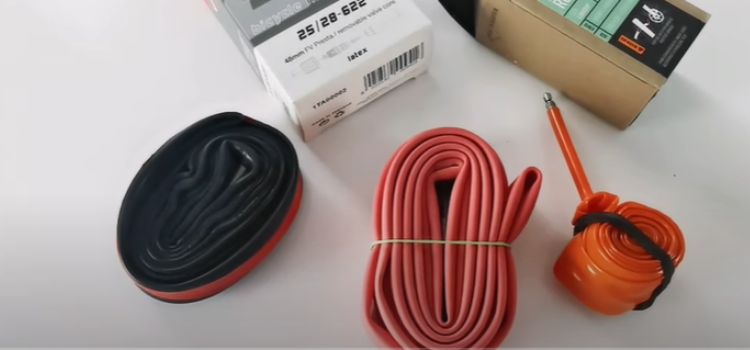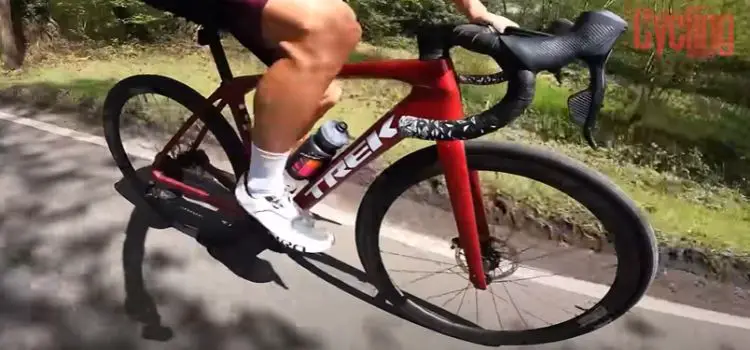What Is a Folding Bike Tire?
As an Amazon Associate I earn from qualifying purchases.
In the dynamic world of cycling, where every revolution of the pedal brings a sense of freedom and exhilaration, the evolution of technology continually shapes the experience for riders. Among the many innovations that have transformed the landscape of cycling, one stands out for its ingenuity and practicality: foldable bicycle tires.
Cycling, with its blend of adventure and exploration, has long been cherished by enthusiasts worldwide. However, the joy of a leisurely ride or an epic journey can quickly be marred by the inconvenience of a flat tire. Enter foldable bicycle tires—a modern solution to an age-old problem.
In this exploration of foldable bicycle tires, we delve deep into the intricacies of this innovative technology. From understanding the science behind Kevlar strands to unraveling the differences between foldable and traditional tires, this article aims to equip cyclists with the knowledge they need to make informed decisions and elevate their riding experience.
Join us as we unfold the secrets, bridge the divide between tradition and innovation, and embark on a journey to discover the revolution of foldable bicycle tires.

The Marvel of Folding Bike Tires
Definition
A folding bike tire, as the name suggests, is a tire designed with the ability to fold into a flatter form, ensuring easy portability and storage. This innovation addresses the perennial concern of cyclists: the inconvenience of carrying spare tires during their journeys. With foldable bike tires, the age-old dread of a sudden blowout becomes a worry of the past.
The Anatomy of Folding Bike Tires
The magic lies in the materials used, and at the heart of foldable tires are Kevlar strands, a synthetic fiber renowned for its strength and flexibility. These strands serve as the backbone, ensuring the tire’s ability to fold without compromising its structural integrity. To understand the marvel of folding bike tires, one must delve into the characteristics of Kevlar.
The Unraveling of Kevlar Strands
Strength Beyond Comparison
Kevlar strands, derived from a combination of phenylenediamine and terephthaloyl, boast a strength that surpasses even steel. This organic fiber, five times stronger than its metallic counterpart, finds applications ranging from protective clothing and bulletproof vests to heavy machinery components like aircraft parts and rockets.
Exceptional Characteristics
The resistance of Kevlar to factors such as heat and time adds to its allure. Unlike materials like nylon or polyester, Kevlar does not melt, stretch, or succumb easily to abrasion. Its durability is underscored by its ability to decompose at a high temperature of 800°F, making it a resilient choice for foldable bicycle tires.
The Cost of Quality
While Kevlar’s exceptional qualities make it the most sought-after material, it also comes with a price tag to match. The high cost is a reflection of its unparalleled strength, durability, and resistance, rendering it a worthy investment for cyclists seeking reliability.
Folding Bicycle Tires vs. Regular Tires: Bridging the Divide
Material Distinctions
The most apparent difference between folding and regular bike tires lies in the material of the tire’s bead. Folding tires utilize Kevlar strands, while their traditional counterparts rely on steel wire, imparting stiffness to the tire.
Flexibility Unleashed
The hallmark of folding tires is their flexibility, a trait bestowed upon them by the Kevlar material. This flexibility allows cyclists to fold and pack these tires conveniently, an impractical feat for their rigid steel-wired counterparts.
Weight Considerations
Weight becomes a critical factor in the comparison between foldable and regular tires. The lightweight nature of folding bike tires, typically reducing weight by 2 ounces per tire, contributes to an overall enhanced biking experience. The reduced weight translates to increased speed without requiring additional energy or strength from the cyclist.
Rubber Composition
Another dimension to the comparison is the rubber composition of the tires. Folding tires often feature a softer rubber composition on the tread, providing enhanced traction across various terrains. However, this comes at the cost of a potentially shorter lifespan compared to the sturdier standard treads of regular tires.
Price Discernment
The disparities extend to the price tag. Folding bike tires, with their advanced materials and features, often come at a higher cost compared to their traditional counterparts. The price difference, ranging from $6 to $30, reflects the enhanced performance and convenience offered by foldable tires.
A Guide to Selecting Folding Bike Tires
Folding bike tires have revolutionized the cycling experience, offering convenience, portability, and enhanced performance. Whether you’re a seasoned cyclist or a beginner, selecting the right folding bike tires can significantly impact your riding experience. Here’s a comprehensive guide to help you navigate the intricacies of choosing the perfect folding bike tire:
Understanding Your Needs
Before delving into the specifics of folding bike tires, it’s essential to assess your individual requirements and riding preferences. Consider factors such as:
Understanding your needs will guide you in selecting folding bike tires tailored to your unique riding style and environment.
Key Considerations
1. Tire Size and Compatibility
Folding bike tires come in various sizes to accommodate different bike types and wheel diameters. Ensure compatibility by matching the tire size with your bike’s specifications. Common sizes include 700c for road bikes, 26-inch for mountain bikes, and 20-inch for folding bikes. Refer to your bike’s manual or consult with a knowledgeable retailer to determine the appropriate tire size.
2. Tread Pattern
The tread pattern plays a crucial role in traction and performance across different terrains. Consider the following tread patterns based on your riding preferences:
Choose a tread pattern that aligns with your intended riding terrain and performance requirements.
3. Tire Width
Tire width influences comfort, stability, and rolling resistance. Consider the following factors when selecting tire width:
Balance your preferences for comfort, stability, and performance when determining the optimal tire width for your riding needs.
Evaluating Tire Features
1. Folding Mechanism
Folding bike tires are prized for their compactness and portability. Assess the folding mechanism to ensure ease of storage and transportation. Look for tires that fold quickly and securely, allowing for hassle-free packing in backpacks or bike bags.
2. Durability and Puncture Resistance
Opt for folding bike tires constructed from durable materials that offer puncture resistance and long-lasting performance. Consider tires with reinforced sidewalls, puncture-resistant belts, or advanced tread compounds designed to withstand sharp objects, debris, and rough terrain.
3. Weight
The weight of folding bike tires can impact overall bike performance and handling. Choose lightweight tires that reduce rotational weight and improve acceleration without compromising durability or puncture resistance. Strike a balance between weight savings and performance enhancements to optimize your riding experience.
4. Brand Reputation and Reviews
Research reputable tire brands known for quality craftsmanship, innovation, and performance. Read customer reviews and seek recommendations from fellow cyclists or bike enthusiasts to gain insights into product reliability, durability, and overall satisfaction.
Installation and Maintenance Tips
Once you’ve selected the perfect folding bike tires, follow these installation and maintenance tips to ensure optimal performance and longevity:
By adhering to these guidelines, you can maximize the performance, durability, and safety of your folding bike tires, ensuring countless miles of enjoyable riding experiences.
Final Musings: Elevating the Biking Experience
In summary, the advent of foldable bike tires has undeniably elevated the biking experience for enthusiasts. The amalgamation of Kevlar’s strength, flexibility, and durability results in a tire that not only addresses the inconveniences of traditional tires but also enhances overall performance.
While the upfront cost of folding tires may raise eyebrows, the advantages in terms of portability, weight reduction, and enhanced traction make them a justifiable investment. Cyclists, armed with the knowledge of foldable bike tire intricacies, can make informed choices to tailor their biking experience to their preferences and requirements.
In the ever-evolving world of cycling, where innovation meets tradition, foldable bicycle tires stand out as a testament to human ingenuity, making the open road more inviting and the cycling experience more liberating than ever before.
Amazon and the Amazon logo are trademarks of Amazon.com, Inc, or its affiliates.






